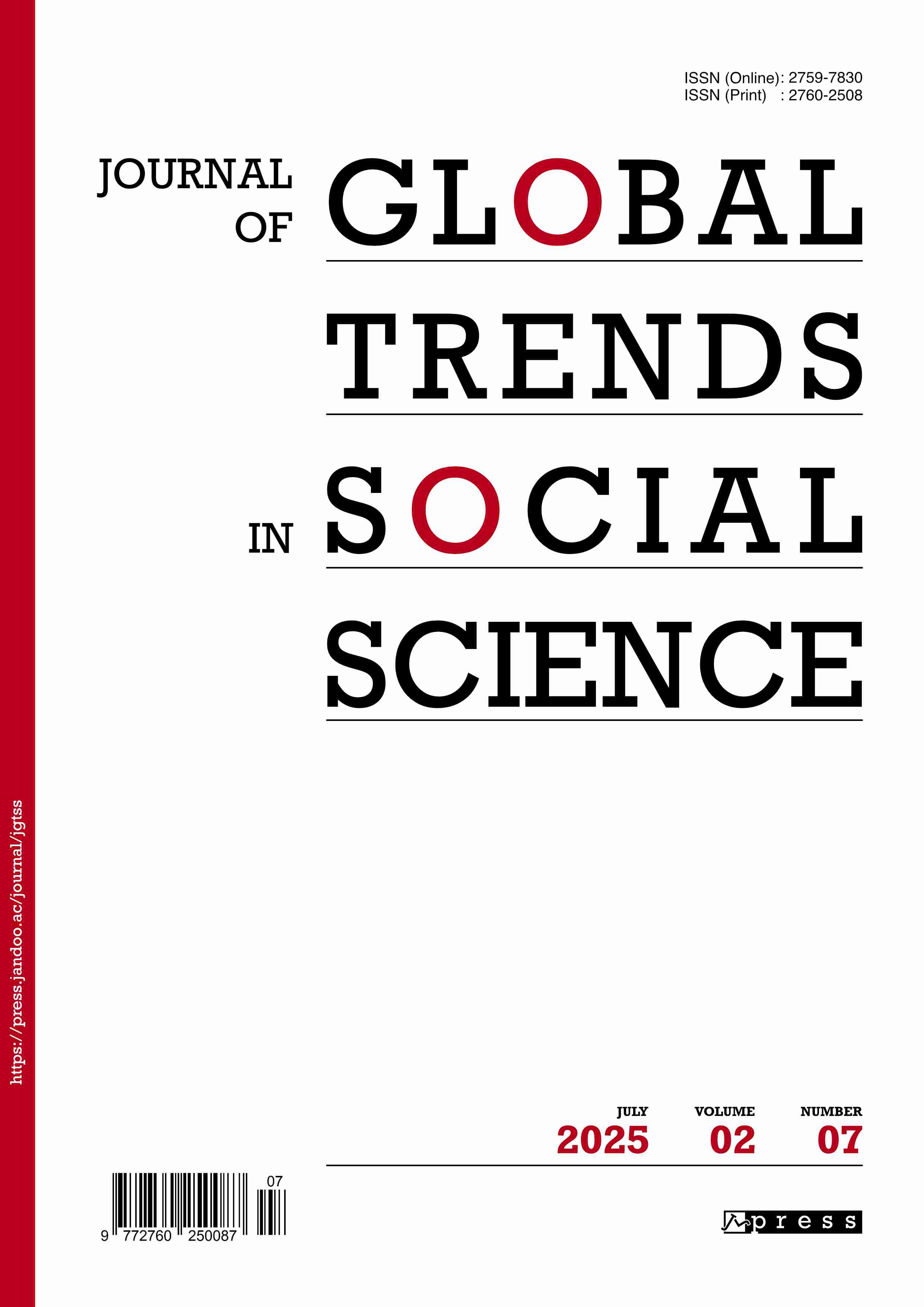The Historical Context and Realist Orientation of Erich Auerbach's Figural Interpretation (Figura)

Abstract
In the 1930s, Erich Auerbach, exiled amid Nazi antisemitism and Aryan philology, revived the Latin-patristic concept of figura: a historical-grammatical method connecting Old Testament prophecy to New Testament fulfilment. In contrast to the prevailing pure philology of the period, figural interpretation embraced a teleological view of history, transforming Hebrew scripture from narrowly Jewish law into a cultural bridge linking everyday reality and transcendental redemption. This article argues that Auerbach’s figural interpretation constitute not merely a philological method but a cultural-political theory consciously devised to defend Judeo-Christian humanism and redefine Western literary realism. By tracing the concept’s patristic origins, examining its wartime deployment against Nazi ideology, and highlighting its role in Mimesis—where mixture of styles elevates ordinary experience into the primary measure of literary realism—the article demonstrates figural interpretation as a threefold intellectual strategy: sharpening historical insight, confronting cultural-political crises, and innovating literary criticism.
Keywords
Erich Auerbach, Figural Interpretation, Aryan Philology, Mixture of Styles, Realism of Everyday Life
References
- Ankersmit, F. R. (2002). Historical Representation. Stanford University Press. https://www.sup.org/books/art-and-visual-culture/historical-representation DOI: https://doi.org/10.1515/9781503619029
- Arvidsson, S. (2006). Aryan Idols: Indo-European Mythology as Ideology and Science (S. Wichmann, Trans.). University of Chicago Press.
- Auerbach, E. (1961). Dante, Poet of the Secular World. University of Chicago Press.
- Auerbach, E. (1965). Literary Language & Its Public in Late Latin Antiquity and in the Middle Ages. Princeton University Press.
- Auerbach, E. (2014). Time, History, and Literature: Selected Essays of Erich Auerbach. Princeton University Press. DOI: https://doi.org/10.1515/9780691234526
- Auerbach, E., & Said, E. W. (2013). Mimesis: The Representation of Reality in Western Literature - New and Expanded Edition. Princeton University Press. DOI: https://doi.org/10.2307/j.ctt3fgz26
- Augustine, S. (2010). The Trinity (The Fathers of the Church, Volume 45). CUA Press.
- Efal, A. (2009). Panofsky’s Idea and Auerbach’s Figura, Two Philological Iconodulist Experiments. Bezalel Journal, 4. https://journal.bezalel.ac.il/en/protocol/article/3056#_edn57
- Efal, A. (2012). Philology and the History of Art. In R. Bod, J. Maat, & T. Weststeijn (Eds.), The Making of the Humanities: Volume II: From Early Modern to Modern Disciplines (pp. 283–300). Amsterdam University Press. https://www.degruyterbrill.com/document/doi/10.1515/9789048517336-015/html?srsltid=AfmBOoqk4716wpThBDdn8gTpaTrOjwCUGnIJJ5zJDFArFfca04meHGD5 DOI: https://doi.org/10.1017/9789048517336.015
- Evola, J. (2018). The Myth of the Blood: The Genesis of Racialism. Arktos Media Ltd.
- Heschel, S. (1994). Nazifying Christian Theology: Walter Grundmann and the Institute for the Study and Eradication of Jewish Influence on German Church Life. Church History, 63(4), 587–605. https://doi.org/10.2307/3167632 DOI: https://doi.org/10.2307/3167632
- Hovind, J. (2012). Figural Interpretation as Modernist Hermeneutics: The Rhetoric of Erich Auerbach’s “Mimesis.” Comparative Literature, 64(3), 257–269. DOI: https://doi.org/10.1215/00104124-1672934
- Lerer, S. (1996a). Literary History and the Challenge of Philology: The Legacy of Erich Auerbach (1 edition). Stanford University Press. DOI: https://doi.org/10.1515/9780804764766-003
- Lerer, S. (Ed.). (1996b). Literary History and the Challenge of Philology: The Legacy of Erich Auerbach. Stanford University Press. DOI: https://doi.org/10.1515/9780804764766
- Lewis, C. T., & Short, C. (1879). Fĭgūra [Perseus Digital Library]. http://www.perseus.tufts.edu/hopper/text?doc=Perseus:text:1999.04.0059:entry=figura
- Lury, C., Viney, W., & Wark, S. (2022). Introduction: Figure, Figuring and Configuration. In C. Lury, W. Viney, & S. Wark (Eds.), Figure: Concept and Method (pp. 1–20). Springer Nature. https://doi.org/10.1007/978-981-19-2476-7_1 DOI: https://doi.org/10.1007/978-981-19-2476-7_1
- Olender, M. (1992). The languages of Paradise: Race, religion, and philology in the nineteenth century. Harvard University Press.
- Philo. (2004). Philo, Volume I: On the Creation. Allegorical Interpretation of Genesis 2 and 3 (F. H. Colson & G. H. Whitaker, Trans.). Harvard University Press.
- Ramelli I. (2009). Origen, Patristic Philosophy, and Christian Platonism Re-Thinking the Christianisation of Hellenism. https://doi.org/10.1163/157007208X377292 DOI: https://doi.org/10.1163/157007208X377292
- Rosenberg, A. (1993). The Myth of the Twentieth Century: An Evaluation of the Spiritual-intellectual Confrontations of Our Age. Noontide Press.
- Seland, T. (2014). Reading Philo: A Handbook to Philo of Alexandria. Wm. B. Eerdmans Publishing Co.
- Snediker, T. (2024). Figural Interpretation and the Logic of Supersession [UC Santa Barbara]. https://escholarship.org/uc/item/78r1s8qx
- Uhlig, C. (1996). Auerbach’s “Hidden” (?) Theory of History. In S. Lerer (Ed.), Literary History and the Challenge of Philology: The Legacy of Erich Auerbach (pp. 36–49). Stanford University Press. https://www.degruyterbrill.com/document/doi/10.1515/9780804764766-005/html?srsltid=AfmBOoquemFLLKo8mcaWXBLJ8_apWWoYtgjSLQRmBkYf7GPrKzXPoCJ-
- Warley, C. (Ed.). (2025). At the Foot of the Mountain of Purgatory. In Auerbach’s Renaissance: Re-births of an Aesthetic from Shakespeare to Ferrante (pp. 61–89). Cambridge University Press. https://doi.org/10.1017/9781009545457.004 DOI: https://doi.org/10.1017/9781009545457.004
- Wilken, R. L. (2003). The Spirit of Early Christian Thought: Seeking the Face of God. Yale University Press.
- Zakai, A. (2016). Erich Auerbach and the Crisis of German Philology: The Humanist Tradition in Peril. Springer International Publishing AG. DOI: https://doi.org/10.1007/978-3-319-40958-0
- Zakai, A., & Weinstein, D. (2012). Erich Auerbach and His “Figura”: An Apology for the Old Testament in an Age of Aryan Philology. Religions, 3(2), Article 2. https://doi.org/10.3390/rel3020320 DOI: https://doi.org/10.3390/rel3020320